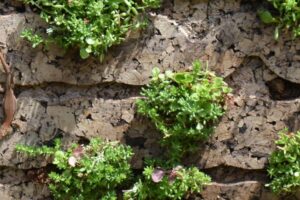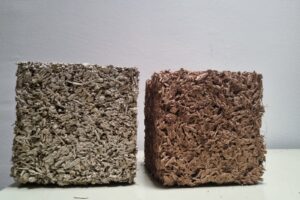
SATE-VEG: A system for energy renovation of buildings that helps reduce the urban heat island effect
October 27, 2025
Spot4Dis: Smart Mapping of Accessible Parking Spaces
November 3, 202528/10/2025
The La Volta project foresees the construction of a large Catalan vault pergola within the Llars Mundet campus, in the Montbau neighbourhood (Horta-Guinardó district). This structure will become a new architectural landmark for Barcelona, combining traditional construction techniques with contemporary innovation. The project involves the Rehabilitation and Architectural Restoration Research Group (REARQ), at the Universitat Politècnica de Catalunya - BarcelonaTech (UPC), and is led by the Architects’ Association of Catalonia (COAC) and the Barcelona Provincial Council.
The works will begin at the end of 2025 and will be completed in time for Barcelona’s year as World Capital of Architecture in 2026. The pergola is designed to host the activity of the Barcelona Demarcation of the Architects’ Association of Catalonia during that year, while also transforming the surrounding urban environment and enabling long-term improvements.
The initiative has been conceived as an experimental laboratory combining academic research, institutional collaboration and business support. Its purpose is to explore the applicability of the Catalan vault in today’s urban public space, creating a construction that integrates traditional knowledge while addressing current technological and societal challenges.
This new icon for Barcelona will become a shaded and welcoming space on a human scale, designed for students, local residents and the wider public. It will serve as a point of reference within the Mundet campus: an agora, meeting place, public square, climate shelter and acoustic refuge — in collaboration with the Casa del Silenci — and it will also function as an open-air classroom.
The project stems from the collaboration between the UPC’s REARQ research group and the LITEIS Ceramic Chair of the UIC, two leading teams in the study and promotion of the Catalan vault and ceramic construction. This traditional construction technique, known for its low material consumption, fast execution and structural efficiency, continues to evolve thanks to the scientific and experimental work of these research groups. The integration of the Flexbrick photovoltaic system, recognised by the European MeZero Project, further strengthens its innovative and technological dimension.
From an environmental perspective, the Catalan vault promotes responsible use of resources and minimises the ecological impact of the construction process. The project will use ceramic materials from Piera Ecoceràmica, manufactured using biogas as the main energy source, making it a fully decarbonised material. The pergola will incorporate sustainable elements — such as ceramic components and Flexbrick photovoltaics — and will include a green roof, helping reinforce the ecological and landscape integration of the intervention.
The installation will be located at a strategic point within the Mundet campus, where several activities and mobility flows converge: the shuttle bus stop, the access to Anna Gironella Square, the faculties of the University of Barcelona, the Anna Gironella Institute and other educational centres, as well as the Romantic Garden (Palau de les Heures) and the link to the Collserola Park. The new shaded structure will serve as a connecting hub between these areas, improving connectivity, permeability and the urban quality of the public space.
Impact
Catalan architects continue to research and reinterpret the technical and expressive limits of the Catalan vault, expanding its structural and artistic potential. Following the legacy of Rafael Guastavino, who at the end of the 19th century revolutionised and internationalised this technique from the former Industrial School of Barcelona, ongoing research keeps this spirit of innovation alive.
The tile vault or Catalan vault continues to play a significant role in contemporary architecture. Its resurgence is largely due to research carried out at various Catalan and international universities, which has highlighted its energy efficiency, sustainability, formal versatility and economy of means.
The project has not only recovered and contextualised its historical global impact, but has also enabled new constructive approaches in which craft tradition is combined with digital technologies and computational tools to generate contemporary architectural forms that are both optimised and environmentally respectful.
Budget and Funding
The project also involves the Escola del Treball Institute, construction companies such as Urcotex, Cardoner, EuroCatalana and Vesta Barcelona, as well as the Catalan Centre for Geotechnics, Piera Ecoceràmica, Flexbrick, IAAC and MAPEI, among others.
With the support of the Barcelona City Council.

Related Projects
- A research team from the inLab FIB at the Universitat Politècnica de Catalunya - BarcelonaTech (UPC), together with the Asociación de Personas con Movilidad Reducida (AsoPMR), has taken part in the Spot4Dis project to enhance the mobility and autonomy of people with reduced mobility.
- The La Volta project foresees the construction of a large Catalan vault pergola within the Llars Mundet campus, in the Montbau neighbourhood (Horta-Guinardó district). This structure will become a new architectural landmark for Barcelona, combining traditional construction techniques with contemporary innovation. The project involves the Rehabilitation and Architectural Restoration Research Group (REARQ), at the Universitat Politècnica de Catalunya - BarcelonaTech (UPC), and is led by the Architects’ Association of Catalonia (COAC) and the Barcelona Provincial Council.
SATE-VEG: A system for energy renovation of buildings that helps reduce the urban heat island effect
Researchers from the Architecture, Energy and Environment (AiEM) group at the Universitat Politècnica de Catalunya - BarcelonaTech (UPC) have developed SATE-VEG, an external thermal insulation system with a vegetal coating that offers seasonally adaptive thermal behaviour, enhances urban biodiversity and promotes positive health effects. The system is made from organic materials, requires low maintenance and consumes minimal water.- A research team from the Interdisciplinary Group on Building Science and Technology (GICITED) at the Universitat Politècnica de Catalunya – BarcelonaTech (UPC) is leading the BioSAFE project, which aims to develop sustainable building envelopes —mainly façades— designed according to sustainability, comfort and safety criteria, with particular attention to their acoustic behaviour and fire performance.




